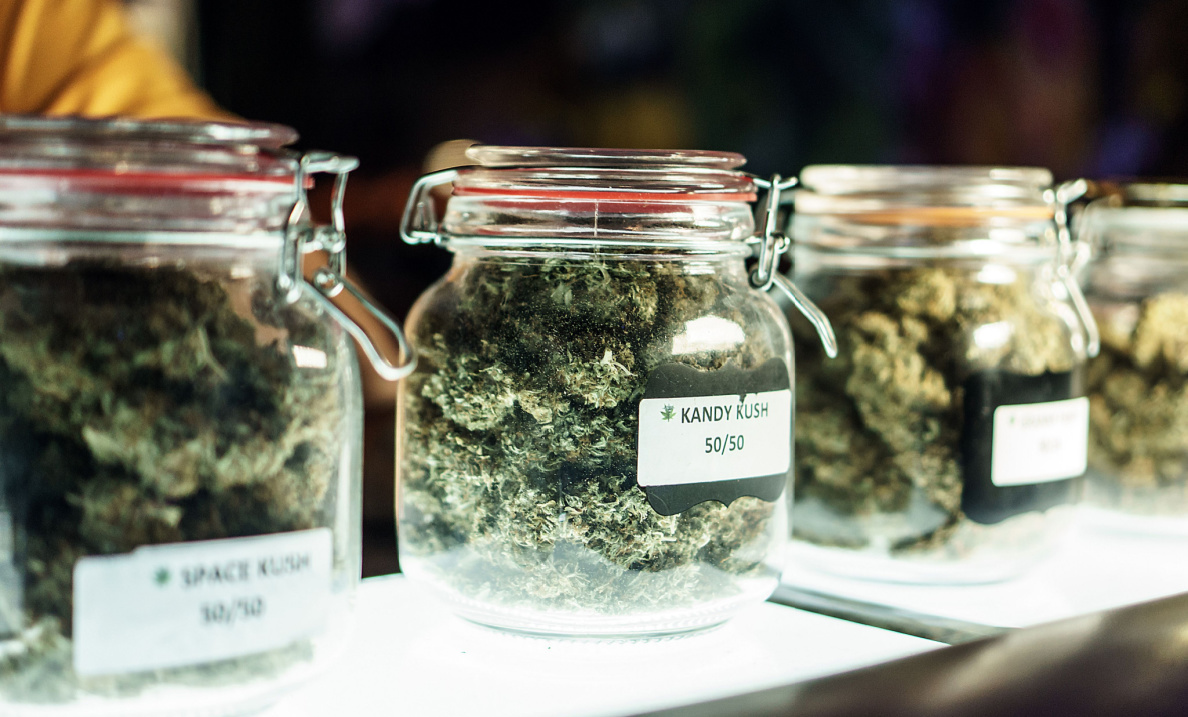Step inside any legal cannabis dispensary across the United States, and you’ll probably notice something right off the bat: There are a plethora of cannabis strains available to the consumer, all of which come with different names and purported effects. Popular breeds like Blue Dream, for example, a Sativa-dominant hybrid that was developed through the breeding of Blueberry with Haze, is known for cerebral stimulation and total body relaxation. Blue Dream is a leading seller in almost every legal state because the consumer has come to appreciate the balance of its effects.
However, many people don’t know that the Blue Dream purchased from a dispensary in Colorado might not be the same as what they got in California. Why the discrepancy? Since cannabis remains an outlaw plant in the eyes of the federal government, there are no standards to ensure every strain lives up to the names printed on the labels. In fact, a recent study shows that all those strain names are mostly inaccurate and cannot be trusted.
Sure, talk to enough self-proclaimed cannabis aficionados, and you’ll hear it all. They’ll tell you Indicas are for relaxing, Sativas are energizing, and the hybrids are for those who need more harmonious effects. In medical marijuana states, patients often rely on cannabis labels to determine which strains are best for their respective conditions. And by all accounts, the consumer should be able to trust that the chemical makeup of their chosen strain is as accurate as what is listed on the label. After all, they can trust the ibuprofen they purchased at the local pharmacy will alleviate pain, and the beer they procured from their neighborhood liquor store will help them relax. Consumers have come to trust the labeling system with all sorts of products, even cannabis. But, as researchers from the University of Colorado Boulder and Seattle-based cannabis commerce platform Leafly have pointed out, cannabis labeling is not without its flaws. They recently published an extensive body of evidence showing that cannabis labels “do not consistently align with the observed chemical diversity” of the product.
In short, cannabis consumers aren’t always getting what they pay for.
For this study, which was published in the journal PLOS One, researchers analyzed 90,000 cannabis samples taken from six states. They found the bulk of the cannabinoids in recreational marijuana – regardless of what was printed on the label – contained THC primarily. Furthermore, the study found the classifications Indica and Sativa were basically worthless. Missing from cannabis labels, according to researchers, is an accurate breakdown of a strain’s terpenes—essential oils derived from plants that contribute to the taste and smell of marijuana and, much to the surprise of many, its psychoactive effects. Contrary to all the hype surrounding the impact of THC and CBD, terpenes play a more crucial role in the overall effect than we initially believed. Yet the details of these essential components are often left off labels – mainly because cannabis firms aren’t required to list them. Although the study identified three main classes of terpene contents: one group high in caryophyllene and limonene; another abundant with myrcene and pinene, and those with terpinolene and myrcene, none of those categories corresponded “to the Indica, Sativa and hybrid labeling scheme.” So, what precisely does this mean?
According to Brian Keegan, co-author and assistant professor of Information Science at Colorado University Boulder, the data can be summed up with a simple conclusion. The current labeling system “is not an effective or safe way to provide information about these products.” He went on to say: “This is a real challenge for an industry that is trying to professionalize itself.”
The cannabis industry has emphasized THC and CBD for so long that most consumers only look for this information on cannabis labels. The consumer doesn’t get any other details about a strain to help make an informed purchasing decision. But the report is not all bad news. The analysis found that while popular breeds of cannabis strains were “consistently inconsistent,” most were more consistent than initially suspected. This means cultivators, by and large, are holding up their end of the bargain. Many appear to be doing a good job growing stable strains. So, while strain structures can vary from state to state, researchers found most are about the same. Even if they vary a little, the average consumer may not notice any difference.
Unfortunately, the labels used commercially — especially concerning the Indica, Sativa, and hybrid labeling system —and in some cases, the strain names—aren’t accurate in capturing the product’s total picture.
The cannabis industry is missing an enormous opportunity to educate the consumer by adopting a standardized labeling system that allows everyone involved to have extensive data on cannabinoids, terpenes, flavonoids, etc. The fact is that the Indica/Sativa rank is no longer working. It could be argued that it never really did. The green industry should embrace an equivalent of the FDA-mandated nutrition label to keep consumers apprised of what they are buying and ingesting. After all, every other food and drug is accompanied by a label detailing its nutrition, so people know what they are getting. We wouldn’t feel safe if all we were given on the label was only the total protein and fat content. Nope, we need more these days to make better choices.
Cannabis should not be excluded from this regulatory scheme. But until the cannabis plant is legalized at the federal level and regulated by the FDA in some form or fashion, a detailed, uniform labeling system isn’t likely to happen soon. Although there is a lot of support for such a system at the state level, there’s also a lot of resistance. Most cannabis firms want more transparency, but it makes other companies nervous. Kaycha Labs can determine exactly what’s in a strain and provide the consumer with all the information they need to make informed purchasing decisions. But the industry needs to adopt a standardized labeling system so we can provide more transparency to the consumers. In the meantime, the best we have to keep the consumer informed and protected is the Certificate of Analysis (COA). It ensures the product has been tested for toxins and includes crucial information. It’s not a perfect system, but it’s the only detail-oriented consumer safety program the industry has at the moment. Be sure your products are accompanied by a COA.













